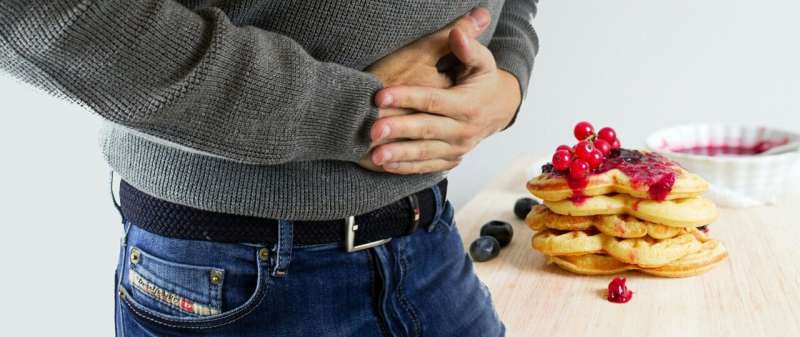This article has been reviewed according to Science X's editorial process and policies. Editors have highlighted the following attributes while ensuring the content's credibility:
fact-checked
peer-reviewed publication
reputable news agency
proofread
Diet and diverticulitis

Divertitulitis is a fairly common condition, especially as we get older. What to eat when plagued with this intestinal condition depends on where one is in the process. For reasons not yet completely understood, little pockets called diverticuli sometimes form in the lining of the digestive tract. The presence of these pouches is called diverticulosis.
Most people with diverticulosis never have further issues. It's a different story, however, if any of these protrusions in the intestines get infected or inflamed. That is called diverticulitis, a painful condition that often requires medical attention.
How does diverticulosis develop in the first place? Diet appears to play a major role, according to a 2021 systematic review of this topic in the journal Nutrients. Recent studies, for example, find that a higher intake of dietary fiber (found only in plant-based foods) is associated with a lower risk for developing diverticulosis and diverticulitis.
How much fiber depends on which stages one is in. A diet low in dietary fiber is usually advised to help recover from a bout of diverticulitis. After that, the National Institute of Diabetes and Digestive and Kidney Diseases (NIDDK) recommends a gradual return to a normal intake of dietary fiber (25 grams is a good goal for most people).
Good sources of dietary fiber include fruit, vegetables, legumes and whole grains. A half cup of raspberries, for example, has 4 grams of fiber. A cup of cooked broccoli has 5 grams. And just 1/2 cup of cooked beans has almost 8 grams of dietary fiber.
The Nutrition Facts label that appears on packaged foods will tell you how much dietary fiber is in each serving. Any food that claims to be "high in fiber" must contain at least 5 grams of fiber per serving.
Other ways to decrease your risk for this disease? Fluids, fluids, fluids, especially water and other sugar-free beverages. This is especially important any time we increase our fiber intake. And if your usual diet is more meat than vegetables, experts say it's time to reverse that ratio. Excess meat consumption is another risk factor for diverticular disease.
What about nuts, popcorn, sunflower seeds and the like? While these are usually restricted when one is recovering from the inflammation and infection of diverticulitis, research now suggests that these foods are not harmful to people with diverticulosis, unless they cause discomfort.
Physical activity has also been shown to help prevent the distress caused by this condition. And if you smoke, it might be a good time to stop. That's another important way to decrease your risk.
2024 MediaNews Group, Inc. Distributed by Tribune Content Agency, LLC.




















